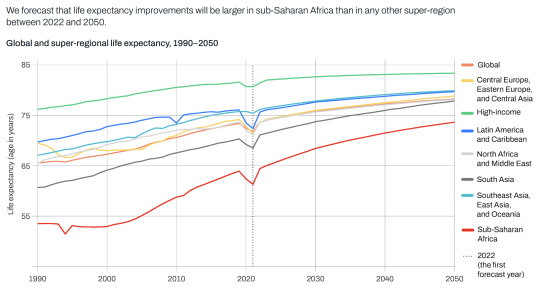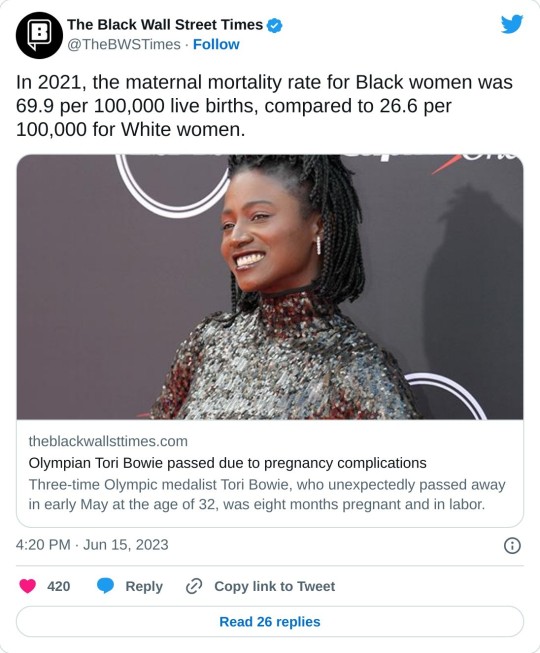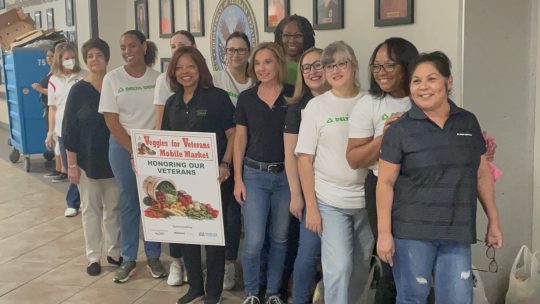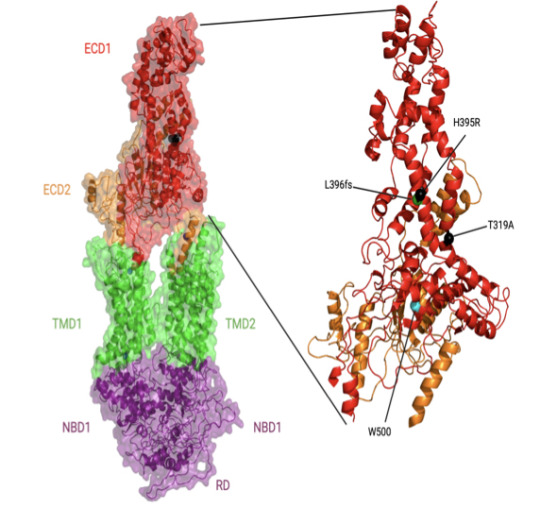#Health Disparities
Explore tagged Tumblr posts
Text
"Global life expectancy is forecasted to increase from 73.6 years of age in 2022 to 78.1 years of age in 2050 (a 4.5-year increase).
Life expectancy increases are projected to be greater in countries with lower life expectancies, reducing global disparities.
There will be a continued shift in disease burden from communicable, maternal, neonatal, and nutritional diseases to non-communicable diseases (NCDs).
The latest findings from the Global Burden of Disease Study (GBD) 2021, published today in The Lancet [May 17, 2024], forecast that global life expectancy will increase by 4.9 years in males and 4.2 years in females between 2022 and 2050.
Increases are expected to be largest in countries where life expectancy is lower, contributing to a convergence of increased life expectancy across geographies. The trend is largely driven by public health measures that have prevented and improved survival rates from cardiovascular diseases, COVID-19, and a range of communicable, maternal, neonatal, and nutritional diseases (CMNNs)...
Global life expectancy is forecasted to increase from 73.6 years of age in 2022 to 78.1 years of age in 2050 (a 4.5-year increase). Global healthy life expectancy (HALE) – the average number of years a person can expect to live in good health – will increase from 64.8 years in 2022 to 67.4 years in 2050 (a 2.6-year increase).

[Note: I cut out significant chunks of this article because they're being really shitty about "disability-adjusted life years," where they explicitly say that years lived as a disabled person don't count/don't count as much. Fuck that! Our lives are worth living!!!! Sincerely, your local disabled blogger.]
“In addition to an increase in life expectancy overall, we have found that the disparity in life expectancy across geographies will lessen,” said Dr. Chris Murray, Chair of Health Metrics Sciences at the University of Washington and Director of the Institute for Health Metrics and Evaluation (IHME). “This is an indicator that while health inequalities between the highest- and lowest-income regions will remain, the gaps are shrinking, with the biggest increases anticipated in sub-Saharan Africa.” ...
The Global Burden of Disease Study (GBD) is the largest and most comprehensive effort to quantify health loss across places and over time. It draws on the work of nearly 12,000 collaborators across more than 160 countries and territories. GBD 2021 – the newly published most recent round of GBD results – includes more than 607 billion estimates of 371 diseases and injuries and 88 risk factors in 204 countries and territories. The Institute for Health Metrics and Evaluation coordinates the study."
-via Institute for Health Metrics and Evaluation, May 17, 2024
--
Note: Obviously we need to make these gaps/disparities close completely!!! And it's also really good to see that we're on the right track.
I genuinely believe that the medical revolution that has just started this decade, along with the huge increase and revolution in communication technology, will make improvements in health and life expectancy come even faster than forecasted. Especially in low-income and low-life-expectancy countries
135 notes
·
View notes
Text
Racial Bias in Medicine Episode 3: Lung Function Tests and Race
In medicine, there is a device called the spirometer that incorrectly assumed that all Black and Asian people innately had lower lung capacity when compared to White people.
Last year, in May 2023, the American Thoracic Society recommended a race-neutral approach to interpreting spirometry. And a new study published in the New England Journal of Medicine in May 2024 showed how more Black patients would have qualified for different disease classifications, occupational eligibility, disability payments, and more had the race adjustment not existed.
@joelbervell
#black health#racial bias#medical bias#medical discrimination#myths#racial injustice#lung functioning#medical#healthcare#wellbeing#physical health#treatment#medicine#health#health and wellness#racial disparities#black people#blacklivesmatter#black lives matter#black history#health disparities#racism#racist#white supremacy#anti blackness#oppression#discrimination#instagram#pulmonaryhealth#pulmonarycare
53 notes
·
View notes
Text
43 notes
·
View notes
Text

#Tori Bowie#Black Mothers Maternal Crisis#Black Mothers#Black Pregnancy#Health disparities#Black Health Matters#Black Lives Matter#Black Babies Matter#Protect Black Women
131 notes
·
View notes
Text
Hey Tumblr! Black women in the US are at a higher risk of dying from pregnancy-related complications. Let's address this issue during Black Maternal Health Week. We can eliminate racial disparities in maternal health by addressing systemic racism and poverty and supporting access to quality healthcare services. Join us in advocating for policy changes and supporting community-based organizations working towards improving maternal health outcomes for Black women.
Black Maternal Health Week: Addressing Racial Disparities in Maternal Health
Maternal health is an essential issue in the United States, and Black Maternal Health Week is a week-long initiative aimed at addressing the racial disparities in maternal health outcomes. The week takes place every year from April 11th to April 17th, and it is an opportunity to raise awareness about the challenges faced by Black women during pregnancy and childbirth. The Centers for Disease…
View On WordPress
#Black Community#Black Lives Matter#Black Maternal Health Week#Black Moms Matter#Community Support#Health Disparities#Maternal Health#Maternal Mortality#Racial Justice#Reproductive Justice#Support Black Women
12 notes
·
View notes
Text
Health inequities are widespread in pediatric medicine, researchers find : Shots - Health News : NPR
4 notes
·
View notes
Text
It would be easy to tell someone who’s emotionally hurting to “just go to therapy”, but not everyone has the privilege of finding a good, affordable therapist who gets them.
Please be mindful of that before you suggest therapy as a catch-all for mental health and healing.
#therapy#healing#recovery#mental health#mental health awareness#mental illness#equity#inequity#health disparities
2 notes
·
View notes
Text
Urgent Clarification Needed for PEPFAR Guidelines
Read full story on-line: #LGBTQ #PEPFAR #HIVAIDS #GlobalHealth #AntiretroviralTherapy #HealthcareAccess #PublicHealth #HIVTreatment #LGTBIQ #HealthEquity #EndingAIDS #HIVAwareness #CommunityHealth #HealthCrisis #HumanRights #HealthyLiving
On Tuesday, the Trump administration stunned the global health community by abruptly pausing PEPFAR, the U.S.-led HIV/AIDS program established in 2003, which has been instrumental in saving 25 million lives worldwide. The administration issued an ambiguous waiver for humanitarian assistance programs earlier this week, raising questions about whether PEPFAR will fully or partially qualify under…
#AIDS#antiretroviral therapy#community health#drug resistance#Global Health#health disparities#healthcare#HIV#humanitarian assistance#LGBTQ+#medication supply#PEPFAR#Public Health#South Africa#Uganda
0 notes
Link
The ACA changed the game for health care in the U.S., making it easier for millions to access affordable coverage. With its focus on preventive care and patient rights, we've seen the uninsured rate drop significantly. But challenges linger—29 million Americans still lack coverage, and disparities in care continue to affect marginalized communities. For real progress, we need to strengthen coverage options, tackle health equity, and invest in preventive measures. The road ahead for health care reform is a marathon, not a sprint, and we have to keep pushing for a system that works for everyone.
Sign Up to the free newsletter here www.investmentrarities.com.
#ACA#healthcare#healthcare reform#affordable care#preventive care#health equity#uninsured#patient rights#health disparities#U.S. healthcare system#health access#public health#marginalized communities#health insurance#coverage options#healthcare challenges#health policy#social justice#wellness#healthcare advocacy
0 notes
Text
Meharry Medical College and Global Partners Build Largest African Ancestry Genomic Database
Meharry Medical College, in collaboration with Regeneron Genetics Center, AstraZeneca, Novo Nordisk, and Roche, has launched an initiative to create the world’s largest genomic database of individuals with African ancestry. The project aims to collect genetic material from 500,000 participants to develop a new reference genome that better represents Black populations, potentially leading to…
#African ancestry#anonymous data#AstraZeneca#diagnostic tests#Diaspora Human Genomics Institute#genetic material#genetic research#genomic database#grant program.#HBCUs#health disparities#medicine development#Meharry Medical College#Novo Nordisk#pharmaceutical companies#reference genome#Regeneron Genetics Center#research collaboration#Roche#STEM education#underrepresentation
0 notes
Link
**Why Black Women Face DEADLIER Breast Cancer Odds**: Delve into the staggering world of breast cancer disparities, where black women face a 40% higher morta...
#black women#breast cancer#health disparities#mortality rate#economic factors#healthcare access#missed treatment opportunities#equal access to healthcare#cancer awareness#social determinants of health#systemic racism#racial health inequities#black lives matter#cancer screening#treatment barriers#cultural biases#patient navigation#survivor support#breast cancer mortality#african american women#cancer disparities
1 note
·
View note
Text
Celebrating National Minority Donor Awareness Day: Saving Lives Through Diversity in Donation 🌍💉
Happy National Minority Donor Awareness Day! 🌍💉 Celebrate the importance of minority organ, eye, and tissue donors. Raise awareness, educate, and encourage registration to save lives. #MinorityDonorAwareness #SaveLives
Introduction Happy National Minority Donor Awareness Day! 🌍💉 Celebrated annually on August 1st, this important day is dedicated to raising awareness about the need for minority organ, eye, and tissue donors. It aims to educate and encourage people from diverse backgrounds to consider donation, thereby helping to save and improve lives. Join us as we explore the significance of National Minority…
#diversity in donation#donor awareness#donor registration#health disparities#minority donors#MOTTEP#National Minority Donor Awareness Day#organ donation#organ transplant#save lives
0 notes
Link
0 notes
Text
Veggies for Veterans: Enriching Arizona's Veteran Community
Veggies for Veterans: Providing fresh produce to Arizona's veterans, addressing food access and health disparities in the community.
Veggies for Veterans, a program initiated by Gregory’s Fresh Market, has been making a significant impact on the lives of Arizona veterans. Aa a part of Diana Gregory Outreach Services, the program aims to address food insecurity and health disparities in veteran communities. By providing fresh fruits and vegetables, Veggies for Veterans ensures that no veteran or their family goes to bed…

View On WordPress
0 notes
Text
Structure of Equity - Jamaine Davis - Meharry Medical College
Sharing some of our #SBGrid member tales from the last year. This one from September 2022.
Numbers speak clearly to Jamaine Davis. As a boy growing up on Long Island, math came so easy to him that one of his family nicknames was "the professor."

Other numbers have shaped his ambitions at Meharry Medical College in Nashville, Tennessee, where Davis runs one of the few labs in the world that uses structural biology to help explain biological health disparities.
For example, U.S. Black adults are twice as likely to have Alzheimer's disease compared to non-Hispanic Whites. And despite a somewhat lower overall lifetime risk of breast cancer, Black women experience a 40% higher death rate from breast cancer than White women at every age and are more likely to be diagnosed with fast growing and late-stage breast cancer.
"My research program is basically at the intersection of structural biology, genetics and disease, and health disparities," says Davis of the big-picture questions that guide his lab's work. "What are the molecular mechanisms that dictate who develops diseases like cancer or Alzheimer's? And then how do we design effective therapies? How do we target the right pathways for the right treatment for that patient?"
One project in the early stages focuses on a gene (ABACA7) that has a stronger effect on risk of Alzheimer's disease in Blacks than the better known ApoE4 gene risk variant. "It's actually the strongest risk factor for developing Alzheimer's in African Americans known so far," Davis says.
As he explains it, ABACA7 transports lipids out of cells, handing off the lipids directly to ApoE, and also interacts with Tau, another protein that goes awry in Alzheimer's. Two missense variants in ABACA7 confer the risk.
"So we've been studying these mutations to see what impact they have on lipid transport," Davis says. "Once we're done, we can look at the people who particularly carry this mutation or variant, see what downstream processes are altered, and design therapies to rescue that. And these variants so far have only been identified in African Americans."

In individuals with African ancestry, the phospholipid-transporting ATPase ABCA7 (ABCA7) gene has stronger associations with Alzheimer’s disease risk than in individuals with European ancestry and than the apolipoprotein E (APOE) ɛ4 allele. The Davis lab is exploring the structure and function of key ABACA7 mutations and how they contribute to alterations in transporting lipids, which may influence Alzheimer’s in African Americans. Credit: Courtesy of J.Davis.
Davis began his academic training on a different career path. With his early affinity for math and science, he reasoned that chemical engineering made sense as a college major. But near graduation at Drexel University, he realized that the typical next step for someone with a chemical engineering degree was a job at an oil company. He hadn't taken one biology course in college, but he found himself drawn to biomedical research instead.
He seized an opportunity to work in a biophysics lab at a neighboring school, University of Pennsylvania, where his mentor Jacqueline Tanaka gave him a peek at the scientific career he could have in biophysics and opened his eyes to the kind of academic role model he could be. Her excitement for X-ray crystallography and for increasing the proportion of women and minorities in science inspired him to go to graduate school.
"She built her career in structural biology and mentoring, hand in hand," Davis says. "She saw some potential in me, and I was at a crossroads." Davis had also been unaware of the extent of health inequities across the country and of the low representation of minorities in academia.
For his thesis, Davis chose the lab of Harvey Rubin, a dynamic speaker who fostered an immediate interest in infectious disease. In Rubin's lab, Davis characterized an enzyme that enables Mycobacterium tuberculosis to enter (and possibly exit) the dormancy stage in the lungs of people.
When Davis finished his PhD in 2007, he was the first Black to earn a doctorate in biochemistry and molecular biophysics at UPenn. "I had a great time," he says. "They were very supportive. But it is pretty shocking. If you look at Twitter, there are other people posting the same kind of statistic. They're the first Black to graduate from a certain program at a certain institution. It does show there is still some under-representation across different departments."
He followed up with two postdoctoral fellowships at the National Cancer Institute. He first showed that a novel protein in Shigella (bacteria that cause food poisoning) was not a protease, as some suspected. A second project elucidated the binding modes of a protein with multiple domain repeats implicated in the development of cancer.
Then he thought about how best to combine his interests in a distinctive research program. He chose Meharry, one of the oldest and largest historically black U.S. academic health centers. (Davis is also a member of the Vanderbilt University Center for Structural Biology.)
Historically black colleges and universities are powerhouses in educating African Americans who go on to earn doctoral degrees in science, technology, engineering, math, and medicine, as Davis and his co-authors reviewed in a commentary (Cell, 2022). Blacks make up 12% of the U.S. workforce, but only 5% of working physicians and 3.6% of full-time faculty conducting research at medical schools.
When the COVID-19 pandemic hit, Davis found new opportunities for mentorship and community outreach. Soon after the pandemic took hold, a student-driven community formed on Twitter with the handle @BlackInBiophys and a logo designed by Taneisha Gillyard, a former postdoc in the Davis lab. Davis spoke at a virtual meeting held by the group.

A former postdoc in the Davis lab, Taneisha Gillyard, designed the logo for @BlackInBiophys, a student-driven community that formed on Twitter during the pandemic. Credit: Taneisha Gillyard.
In a short time, a strong sense of community developed among people who may have never met in person, but know a lot more about each other through social media, Davis says. People share grant writing tips, training and job opportunities, and generally celebrate the scientists, their contributions, and career options for the next generation.
The visibility may help change other statistics about Black researchers receiving less NIH funding and being cited less often than their white colleagues, Davis says.
Davis also teamed up with Meharry colleague Jennifer Cunningham-Erves to develop a funded community outreach project to address community concerns about vaccines. He has spoken about the basic science of mRNA at townhall-style community meetings, in person and virtual. The online recordings have reached people from Chicago to New York to Haiti.
The project collaborates with a consortium of more than 90 churches in middle Tennessee and Better Options TN, a community nonprofit organization. To understand concerns, the Meharry team interviewed people in the Southern United States. They developed and organized content on a frequently updated web site, https://yourcovidvaxfacts.com/en.
"We asked about their thoughts about the vaccine and the virus," Davis says. "The biggest one, particularly for Black Americans, was the distrust with government and healthcare. But I was very impressed with some of the questions that the public had. They weren't getting answers, and they wanted answers. If you remember, one of the major issues with people not getting a vaccine was that they thought it would affect their DNA. They just weren't familiar with mRNA."
Davis felt their concerns and trust issues as well. He initially was cautious about being vaccinated himself, waiting to see more data about its safety in people. "Even being a scientist, I was hesitant," he says. "I didn't want to be one of the first," he says. But as he explained the science and helped alleviate concerns of others, he also convinced himself to get the vaccine too.
Meanwhile, back in the lab after the pandemic disruptions, Davis and his team are working to improve health outcomes for populations most at risk, one variant protein and pathway at a time.
- Carol Cruzon Morton
0 notes
Text
Improve access to quality care for all by using innovative care guidance strategies to tackle healthcare inequities. Empower your organization with effective solutions promoting inclusive healthcare experiences. Boost patient satisfaction with informed decisions!
0 notes